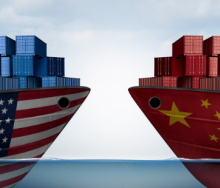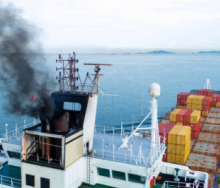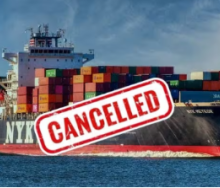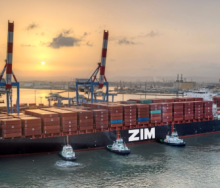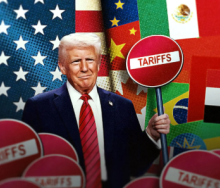Amid escalating trade tension since last Wednesday’s announcement of the implementation of ‘reciprocal tariffs’ by President Donald Trump, and the maritime industry counting 505 days since the Red Sea risk situation started, supply-chain planning is well-nigh impossible.
According to Lars Jensen, CEO of container intelligence resource, Vespucci Maritime, shippers, forwarders and carriers are forced to act from a short-term tactical perspective because of trade-flow volatility with the US.
The daily wait-and-see scenario, he said, was exacerbated by Trump’s threat to impose additional 50% tariffs on China from April 10 if China did not remove its 34% retaliatory tariffs on the US, even though this was in response to an earlier 34% tariff levied by the US on China.
And while hope is fast dimming for any trade rapprochement between the world’s two leading economies, Jensen said: “It is difficult to see China backing down, as giving in to a public ultimatum would cause a significant loss of face for the Chinese leadership.”
He said it meant US importers getting goods from China were facing tariff uncertainty at a level beyond anything seen previously.
He added that, in contrast to China’s tit-for-tat response to the Trump administration’s trade belligerence, the European Union was moving very slowly.
“They have suggested a mutual zero tariff on autos and industrial products, but were rejected by the US.”
Although the EU continues to threaten more tariffs, the proposal they are about to announce appears only to be a response to the previously imposed steel and aluminium tariffs.
Meanwhile, although rumours abound as to which countries want to negotiate with the US, Jensen said: “The problem here is that there is limited solid information to ascertain whether a stated political desire to negotiate also equates to actual negotiations happening.
“And if actual negotiations are happening, it is equally murky what it will take to placate Trump enough to reduce or remove tariffs – and within which timeline this will happen.”
Getting back to his original statement, that medium- to long-term supply chain strategising is basically impossible given the short-term flexibility that is currently required of importers and exporters, Jensen said shippers found themselves “in an almost impossible situation”.
Considering the utter shock that reverberated across global markets after last Wednesday’s announcement, he said some traders feared that if they shipped now and common sense somehow prevailed, resulting in a softening stance by Trump, they would be stuck paying the high tariffs for shipping early.
However, given the current US administration's recalcitrance, waiting to see if Trump doesn’t backpedal could have the opposite effect, because there is a very real risk that tariffs will increase even further.
Jensen said it had become clear that US importers, especially those whose supply chain and inventories allowed them to halt and postpone shipments, were adopting a wait-and-see attitude.
“But this also means all bets are off in terms of how much bookings this week will drop and, as a result, how much of a drop we might see in not just vessel utilisation but also in spot rates into the US.
“The next ‘domino to fall’ would be additional last-minute blank sailings to the US from the carriers in case the drop in bookings becomes too severe. As we saw when the pandemic first hit the market in 2020, the carriers can act very rapidly when faced by a swift drop in demand.”
Because of everything that has happened since Trump first threatened to implement tariffs, and then went ahead despite warning of what it might do to America’s economy, it “means that supply chain decisions are taken from a short-term tactical perspective right now,” Jensen said.
“No one will firmly commit to any medium- or long-term decisions to change the supply chain as the regulatory conditions are far too uncertain. Contemplate? Yes. Commit? No.”

